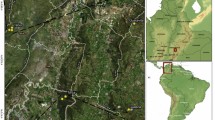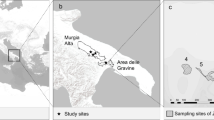Summary:
Termites invest considerable time and energy constructing elaborate mounds out of clay, sand, silt, excreta and saliva, which they defend vigorously against predators and parasites. Termite mounds are fertile and potentially attractive resources for plants, which may threaten the stability of the mound. Field surveys at Boola Boola Forest in SE Australia revealed significantly higher abundance and diversity of vascular plants growing on uninhabited than inhabited mounds of the termite Coptotermes lacteus. These data reveal that the presence of termites affects the establishment and growth of vegetation. Germination experiments indicate that plant growth suppression is not chemically mediated but rather is due to the impenetrable nature of the mound surface. Analyses of soil types suggests that termite workers may choose particular clay minerals for mound construction, which enhances surface impenetrability and thus increases the engineered integrity of the mound.
Similar content being viewed by others
Author information
Authors and Affiliations
Additional information
Received 20 October 1998; revised 22 February 1999; accepted 5 March 1999.
Rights and permissions
About this article
Cite this article
Rogers, L., French, J. & Elgar, M. Suppression of plant growth on the mounds of the termite Coptotermes lacteus Froggatt (Isoptera, Rhinotermitidae). Insectes soc. 46, 366–371 (1999). https://doi.org/10.1007/s000400050158
Issue Date:
DOI: https://doi.org/10.1007/s000400050158




